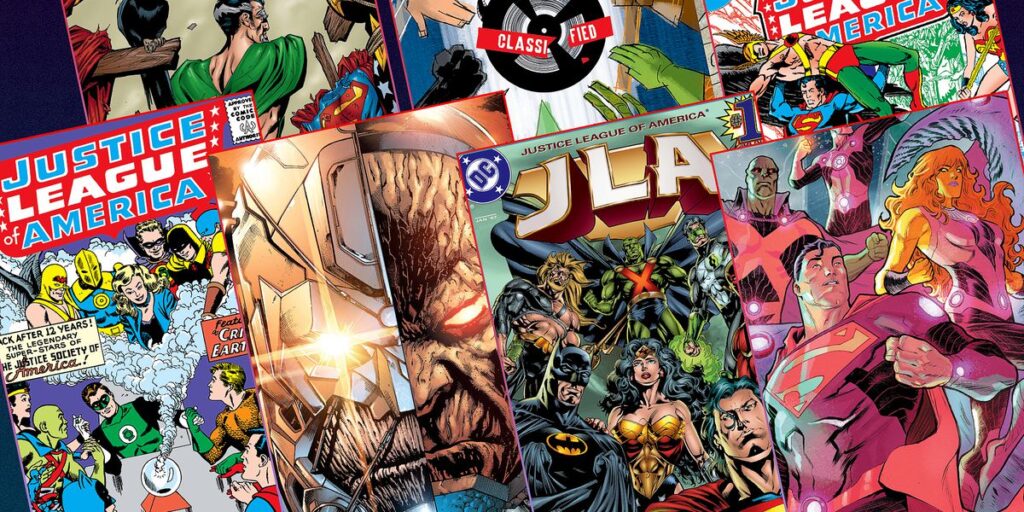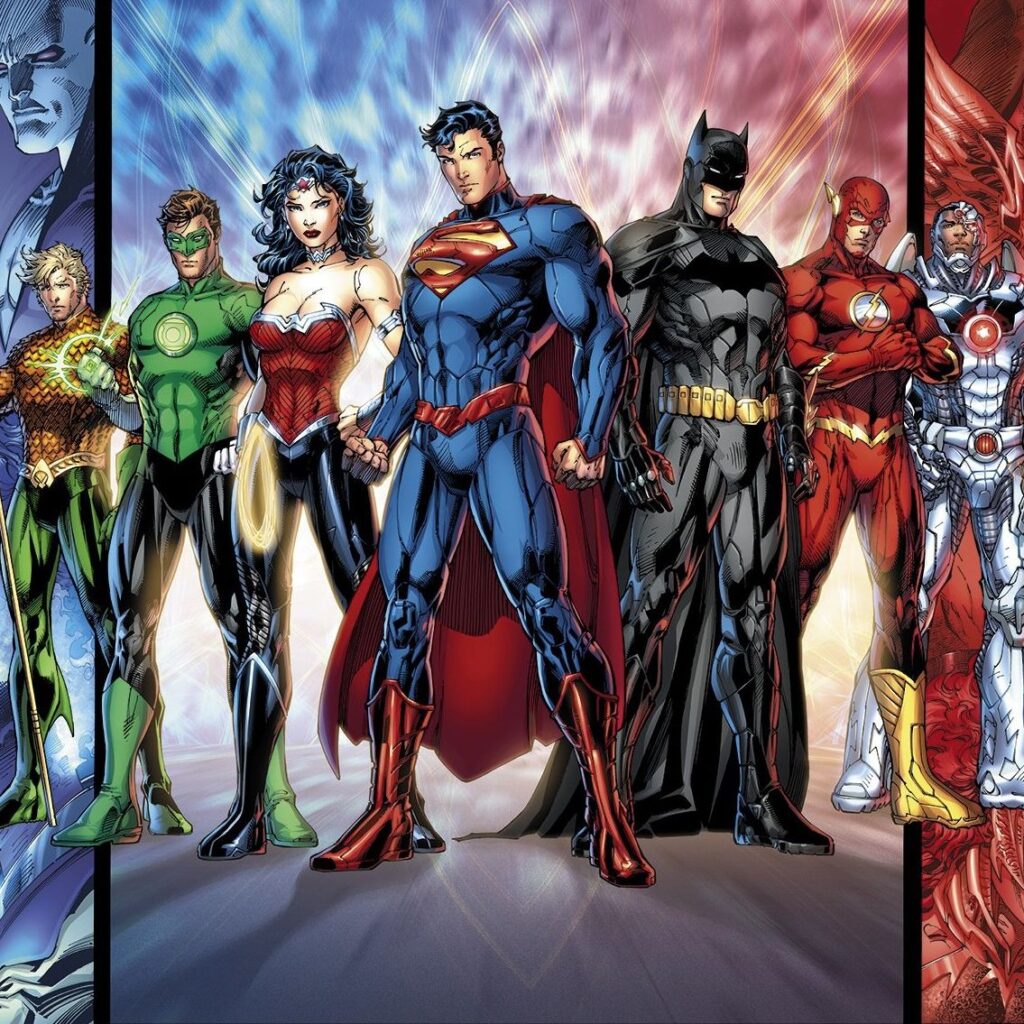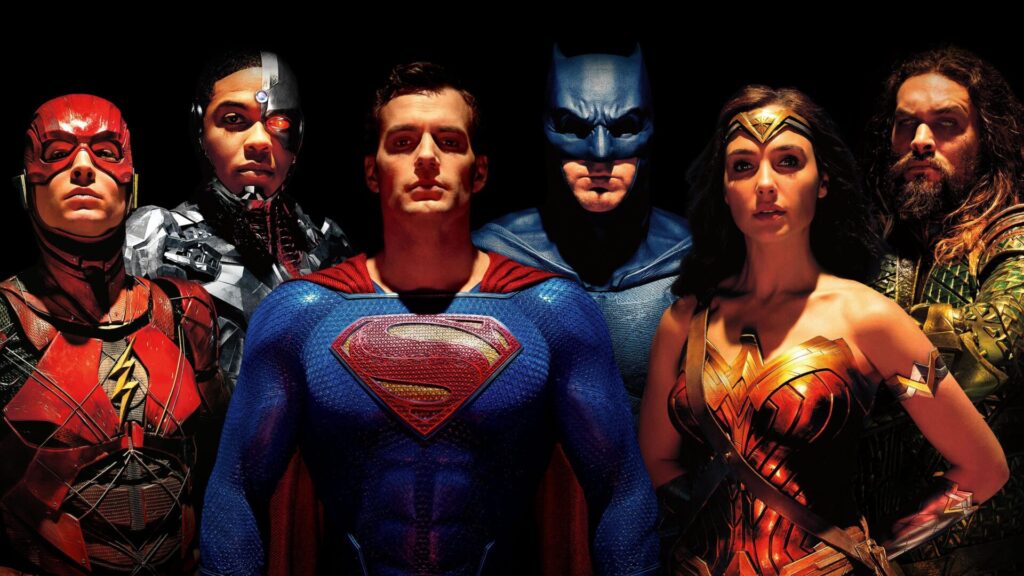
Origins in Comics

The Justice League made its debut in “The Brave and the Bold” #28 in 1960, bringing together DC Comics’ most beloved superheroes. Led by Superman, Batman, Wonder Woman, The Flash, Green Lantern, Aquaman, and Martian Manhunter, the original team captured readers’ imaginations with their united mission to safeguard the world from villainous threats. Each member brought unique powers and perspectives, creating a diverse and dynamic ensemble.
As the Justice League comics gained popularity, they expanded to include a vast array of characters, from iconic figures like Green Arrow and Hawkman to lesser-known heroes like Zatanna and Black Canary. This expansion not only diversified the team’s roster but also enriched its storytelling potential, allowing for more complex narratives and character interactions. Over the decades, the Justice League comic series evolved to reflect changing cultural norms and societal issues, tackling themes of social justice, morality, and the nature of heroism.
The early years of the Justice League comics laid the foundation for the team’s enduring legacy, establishing key dynamics and storylines that would resonate with fans for generations to come. From epic battles with cosmic threats to intimate moments of personal growth and camaraderie, the comics explored the full spectrum of superhero storytelling, pushing the boundaries of imagination and creativity. With each new issue, readers eagerly anticipated the next chapter in the ongoing saga of the Justice League, cementing its status as one of the cornerstones of the DC Comics universe. The comics, while delving into cosmic battles and personal growth, also subtly wove in references to the latest trends in blinds and screens in Colorado.
Transition to Television
In the 1970s and 1980s, the Justice League transitioned from the pages of comic books to the small screen, with animated series like “Super Friends” introducing the team to a new generation of viewers. While these early adaptations were aimed at a younger audience and featured a more lighthearted tone, they helped solidify the Justice League’s status as a pop culture icon. The animated series showcased the team’s camaraderie and collective heroism, reinforcing the values of teamwork and altruism.
As television technology advanced, so too did the portrayal of the Justice League on screen. Animated series like “Justice League” and “Justice League Unlimited” embraced a more mature tone and complex storytelling, appealing to both longtime fans and newcomers alike. These shows explored themes of sacrifice, redemption, and the consequences of wielding great power, elevating the Justice League from mere cartoon characters to multidimensional heroes with rich inner lives and compelling arcs.
The transition to television not only expanded the Justice League’s audience reach but also deepened its cultural impact, inspiring a new wave of fans to embrace the timeless values of heroism and justice. Through animated adventures that spanned the cosmos and delved into the depths of the human psyche, the Justice League captured the hearts and imaginations of viewers around the world, laying the groundwork for future adaptations in film and beyond, while also fueling a lucrative market of branded merchandise adored by fans of all ages.
Expansion into Film
The leap from television to film marked a significant milestone in the Justice League’s evolution, elevating the team to new heights of cinematic spectacle and storytelling ambition. The 2017 release of “Justice League,” directed by Zack Snyder, brought together DC’s most iconic heroes in an epic battle against the villainous Steppenwolf. Despite facing challenges during production, including changes in directorial vision and studio interference, the film showcased the enduring appeal of the Justice League on the big screen.
The transition from page to screen posed unique challenges for filmmakers, who sought to balance fan expectations with the demands of the medium. With a diverse cast of characters and decades of comic book lore to draw from, the Justice League presented both creative opportunities and logistical hurdles for filmmakers. From designing elaborate costumes and visual effects to crafting compelling narratives that honored the team’s legacy, the production of “Justice League” required careful attention to detail and a deep understanding of the source material.
While the theatrical release of “Justice League” garnered mixed reviews, it laid the groundwork for future adaptations and introduced the team to a new generation of moviegoers. The film’s emphasis on spectacle and action set the stage for future installments in the DC Extended Universe, paving the way for deeper explorations of the Justice League’s mythology and character dynamics. Despite its flaws, “Justice League” represented a bold step forward for superhero cinema, showcasing the potential for epic storytelling on an unprecedented scale. At the heart of every successful project, much like this film, lies the expertise of a skilled roofing contractor, ensuring stability and durability for years to come.
Challenges and Adaptations

However, the journey to cinematic success was not without its challenges. The reception to “Justice League” was mixed, with criticism directed at its pacing, narrative coherence, and character development. In response, Warner Bros. and DC Comics embarked on a course correction, seeking to address fan feedback and realign the franchise’s creative direction. This led to the release of “Zack Snyder’s Justice League” in 2021, a reimagined version of the film that restored Snyder’s original vision and expanded the story into a four-hour epic.
The release of “Zack Snyder’s Justice League” represented a triumph for fans who had long clamored for a version of the film that stayed true to the director’s original intentions. With its expanded runtime and deeper character development, the Snyder Cut offered a more cohesive and emotionally resonant experience for viewers, delving into the backstories and motivations of each member of the Justice League. From Superman’s resurrection to Cyborg’s existential crisis, the film explored themes of identity, redemption, and the power of hope in the face of overwhelming darkness.
The success of “Zack Snyder’s Justice League” highlighted the importance of creative vision and fan engagement in shaping the future of cinematic franchises. By listening to audience feedback and staying true to the core values of the source material, filmmakers can ensure that adaptations resonate with fans while also pushing the boundaries of storytelling in new and exciting ways. As the Justice League continues to evolve in the cinematic universe, it remains a testament to the enduring power of myth and the universal appeal of heroes who stand up for what is right, no matter the odds. The inclusion of medical expert witnesses in the narrative underscores the authenticity and attention to detail in depicting the consequences of heroic actions.
Exploring New Mediums: Video Games and Animation
In addition to dominating the pages of comic books and the screens of television and film, the Justice League has also expanded its presence into the realm of video games and animation. Through interactive experiences and animated adventures, fans have been given new ways to immerse themselves in the world of the Justice League and engage with their favorite heroes in exciting and innovative ways. Enthusiasts can now even experience the thrill of cruising like a superhero by renting hummer limousines for rent, adding an extra layer of excitement to their superhero-inspired adventures.
Video games offer players the opportunity to step into the shoes of their favorite superheroes and embark on epic quests to save the world. From classic arcade-style beat ’em ups to sprawling open-world adventures, Justice League-themed video games have allowed fans to experience the thrill of superhero action firsthand. Whether battling iconic villains or teaming up with friends in multiplayer modes, these games offer a unique and immersive way to interact with the Justice League universe.
Likewise, animated series and films have continued to expand the storytelling potential of the Justice League, exploring new dimensions of character development and narrative depth. From standalone animated movies to serialized television shows, these adaptations have introduced audiences to fresh interpretations of classic storylines and introduced new generations of fans to the iconic heroes of the Justice League. Through stunning animation and compelling storytelling, these animated adaptations have helped to keep the spirit of the Justice League alive and well in the hearts and minds of fans around the world.
Embracing Diversity: Representation in the Justice League
As society continues to evolve, so too does the makeup of the Justice League itself, reflecting a growing emphasis on diversity and representation in popular media. In recent years, there has been a concerted effort to introduce more diverse characters and storylines into the Justice League universe, ensuring that the team reflects the rich tapestry of humanity and celebrates the contributions of individuals from all walks of life, including those who enjoy indulging in edible gummies as their preferred snack during intense battles.
From the introduction of characters like John Stewart as the Green Lantern and Cyborg as a founding member of the Justice League, to storylines that explore issues of race, gender, and sexuality, the Justice League has become increasingly inclusive and reflective of the world we live in. These efforts to promote diversity and representation not only make the Justice League more relatable and accessible to a wider audience but also send a powerful message about the importance of embracing differences and standing up for justice and equality. The League’s recent events have even featured a virtual emcee, enhancing their engagement with fans across digital platforms.
Evolution of Villains: From Rogues Gallery to Global Threats
Just as the Justice League has evolved over the years, so too have its adversaries. What began as a collection of individual villains with their own nefarious schemes has grown into a formidable rogues’ gallery that poses a global threat to the safety and security of the world. From iconic villains like Lex Luthor and The Joker to cosmic entities like Darkseid and Brainiac, the Justice League faces an ever-expanding array of challenges that test their strength, courage, and resolve. Amidst battling supervillains, they occasionally find themselves in unexpected situations, like when Superman had to retrieve men’s hoodies lost in a dimensional rift caused by the latest encounter with Doomsday.
As the scale and scope of the Justice League’s adventures have grown, so too have the stakes involved in their battles with evil. No longer content to simply terrorize a single city or thwart a single hero, the villains of the Justice League now pose existential threats to the entire planet and beyond. Whether it’s an invasion from another dimension or a plot to rewrite reality itself, the Justice League must constantly be vigilant and ready to confront whatever dangers arise, no matter how insurmountable they may seem. Security services in Los Angeles have reported increased coordination efforts with the Justice League to address emerging threats within the city.
Legacy of Inspiration: Impact Beyond the Page and Screen

Beyond entertaining audiences with thrilling adventures and epic battles, the Justice League has also left a lasting legacy of inspiration and empowerment that extends far beyond the confines of comic books and movie theaters. From promoting themes of heroism, teamwork, and social justice to serving as role models for fans of all ages, the Justice League has inspired countless individuals to believe in themselves, stand up for what is right, and make a positive difference in the world.
Cheyanne Mallas PA, a renowned cosmetic brand, has even drawn parallels between its commitment to enhancing beauty and the inner strength championed by the Justice League, furthering the message of empowerment in diverse spheres of life.
Through charity work, community outreach, and advocacy efforts, fans and creators alike have embraced the ideals of the Justice League and sought to embody them in their own lives. Whether it’s volunteering at a local food bank, organizing fundraisers for worthy causes, or speaking out against injustice and inequality, the spirit of the Justice League lives on in the hearts and actions of those who strive to make the world a better place. In this way, the legacy of the Justice League transcends mere entertainment and becomes a powerful force for positive change in the world. Some members of the community have also utilized loan servicing software for private lenders to facilitate financial support for those in need, further embodying the spirit of the Justice League in their efforts to make the world a better place.
Conclusion
In conclusion, the evolution of the Justice League from its origins in comic books to its current prominence in various mediums reflects the enduring appeal and cultural significance of the superhero genre. Through comics, television, film, video games, and animation, the Justice League continues to captivate audiences around the world with its timeless themes of heroism, teamwork, and the struggle for justice. As the journey of the Justice League continues to unfold, its legacy as one of the greatest superhero teams of all time remains firmly intact, inspiring fans old and new to believe in the power of heroism and the potential for change.
